The Most Waterproof Flooring Options
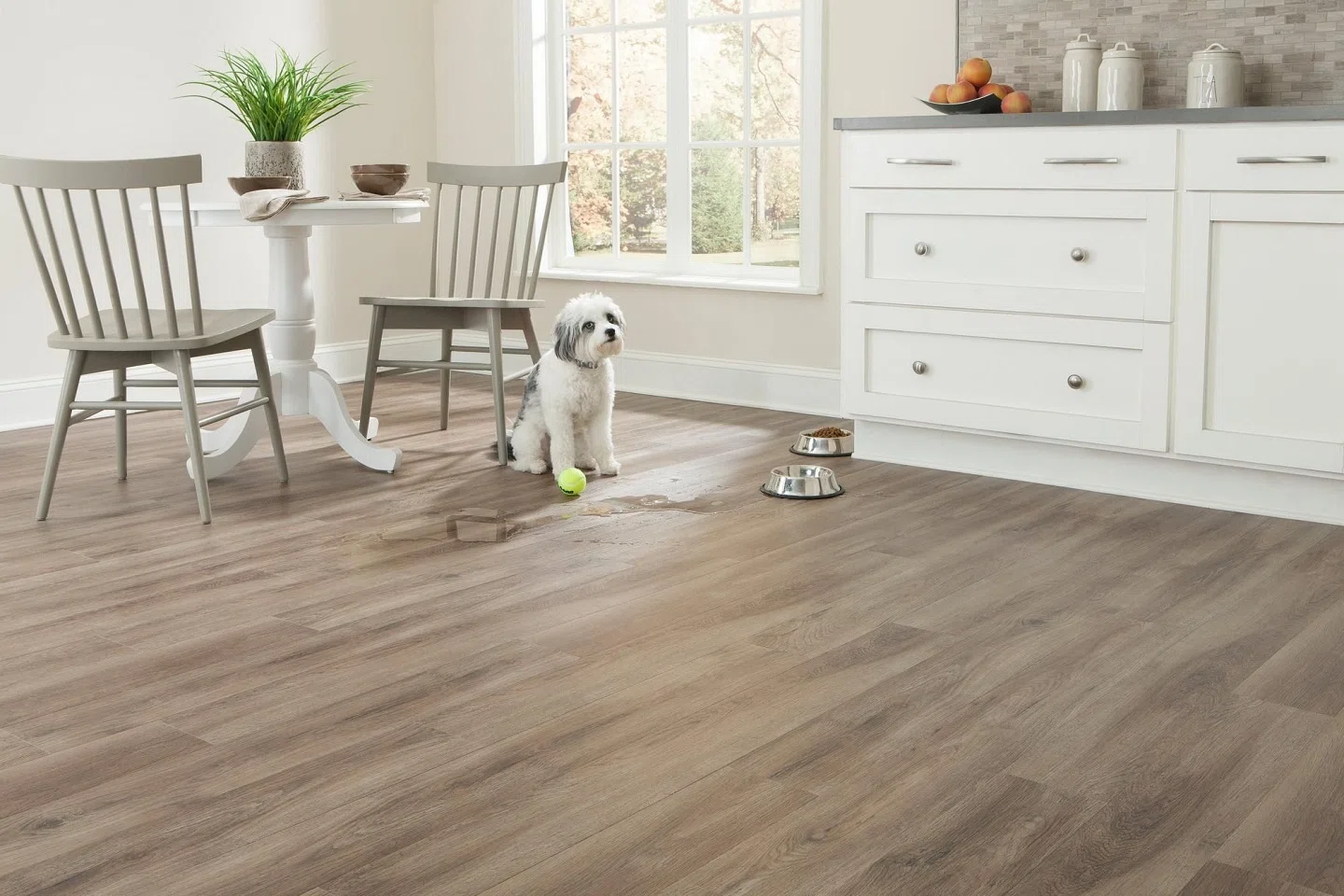
Waterproof flooring has revolutionized the world of home improvement and interior design, offering a solution for areas exposed to moisture and water, such as bathrooms, kitchens, basements, and laundry rooms. It’s a game-changer because it can withstand water and other liquids without succumbing to issues like warping, staining, or developing mold and mildew. In this guide, we will delve into the world of waterproof flooring, exploring its various types, unique characteristics, advantages, disadvantages, installation methods, and key considerations for selecting the best option for your space.
Waterproof Flooring Material
Water can often enter your floorboards and cause swelling or damage to your planks. For non-water-resistant flooring materials, moisture can cause permanent damage, leading to complete disintegration. A waterproof flooring material means that your planks are accommodated with an extra barrier that stops the moisture before reaching the core layer. This does not imply you can leave water on these materials as long as you please; it just means you have some time to remove them before ruining your floors. This barrier is a temporary protection.
Waterproof flooring materials are often combined with synthetic polymers or other chemicals that protect their core against dampness. Organic flooring materials, mostly generated from plants, are not immune to moisture, and molds and swellings are seen in them shortly after water exposure. However, not all materials are entirely organic or inorganic. The balance between organic and inorganic determines how well it can withstand wetness.
1. SPC Flooring
SPC (Stone Plastic Composite) flooring is a type of rigid core vinyl flooring. It’s constructed from a blend of natural limestone powder, polyvinyl chloride, and stabilizers, compressed under high pressure to create dense, durable planks. Renowned waterproof SPC flooring is an excellent choice for areas prone to moisture, such as bathrooms, kitchens, and basements.
One of the primary advantages of SPC flooring lies in its waterproof feature, making it highly resistant to spills, stains, and water damage. Its dense composition also provides enhanced durability, offering resistance against scratches, dents, and impacts, making it suitable for high-traffic areas in homes. Additionally, SPC flooring is relatively easy to install, typically featuring a click-lock system that allows for simple, hassle-free installation without the need for adhesives. Its rigid core structure provides stability, reducing the likelihood of buckling or warping over time, which makes it the best material for laundry room flooring or bathroom flooring. Moreover, SPC flooring tends to be low maintenance, requiring minimal upkeep. It’s easy to clean with regular sweeping and occasional mopping, which makes it a practical choice for busy households. Beyond its functional benefits, SPC flooring offers a wide range of styles and designs, mimicking the look of natural materials like wood or stone. This versatility allows homeowners to achieve their desired aesthetic without compromising on durability or performance. Overall, the waterproof nature, durability, ease of installation, low maintenance, and design versatility make SPC flooring a popular and practical choice for flooring homes.
2. Luxury Vinyl Flooring (LVT and LVP)
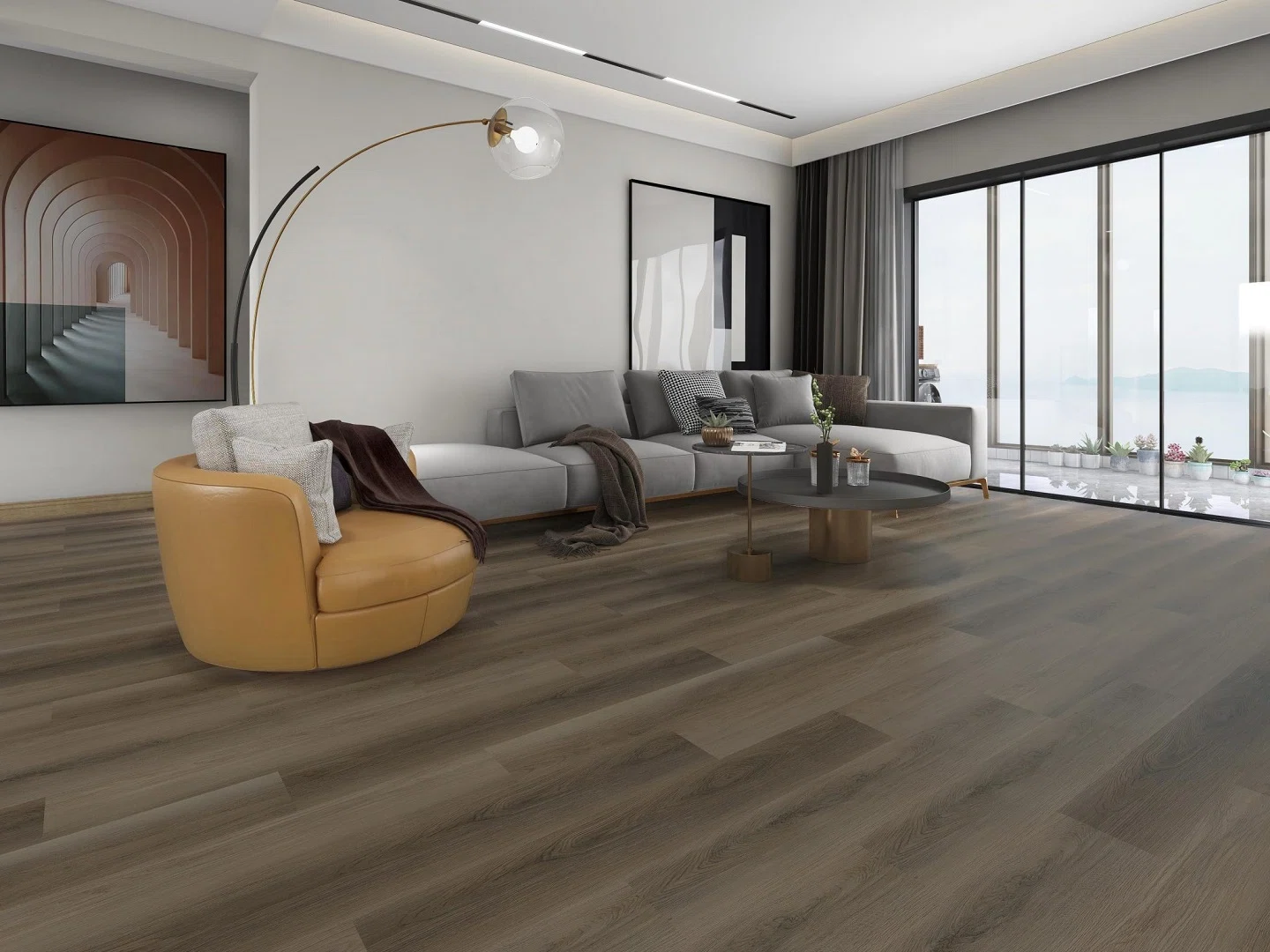
Luxury Vinyl Flooring, available in both tile (LVT) and plank (LVP) formats, is a highly versatile and popular choice. LVT and LVP can replicate the look of wood, tile, or stone with remarkable realism. One of their standout features is their exceptional waterproof properties. These floors are constructed with multiple layers, including a waterproof core, which makes them impervious to water damage.
Luxury vinyl flooring offers a perfect blend of aesthetics and functionality. It not only looks like natural materials but also withstands moisture, stains, and daily wear and tear. Moreover, it’s warmer and softer underfoot compared to traditional hard surfaces, making it comfortable to walk on.
Additionally, luxury vinyl flooring comes in a wide range of styles, colors, and patterns, which gives you the opportunity to achieve the desired look for your space without sacrificing performance.
Tip: Explore the best qualified floor material types, including vinyl. laminate, hardwood, and etc.
3. Tile Flooring (Ceramic, Porcelain, and Stone)
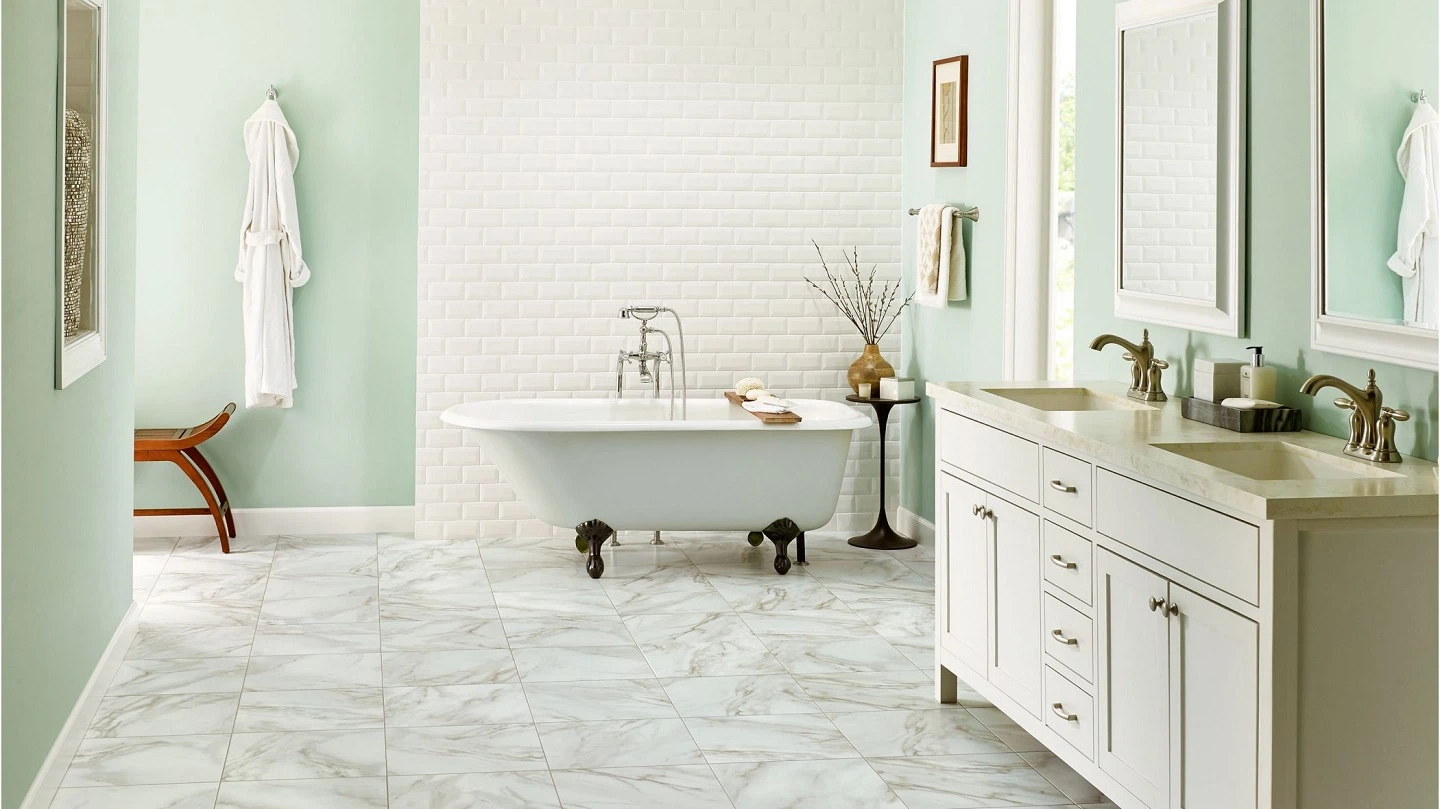
Ceramic, porcelain, and natural stone tiles have long been favored for their waterproof properties. These materials are made from fired clay or stone, which inherently resists water penetration. When properly installed with grout and sealed, they create an impermeable surface that can endure even the wettest environments.
Tile flooring offers a plethora of design options, from classic and elegant to contemporary and trendy. You can choose your floor from a variety of colors, sizes, shapes, and textures to achieve the desired aesthetic for your space. Additionally, tiles are exceptionally durable, resisting scratches, stains, and high traffic.
One of the notable advantages of tile flooring is its longevity. If you keep it properly, it can last for decades. This characteristic of tile flooring makes it a cost-effective choice in the long run.
Tip: How to find the best floor to hide dog hair? It’s time to find a solution.
4. Waterproof Laminate Flooring
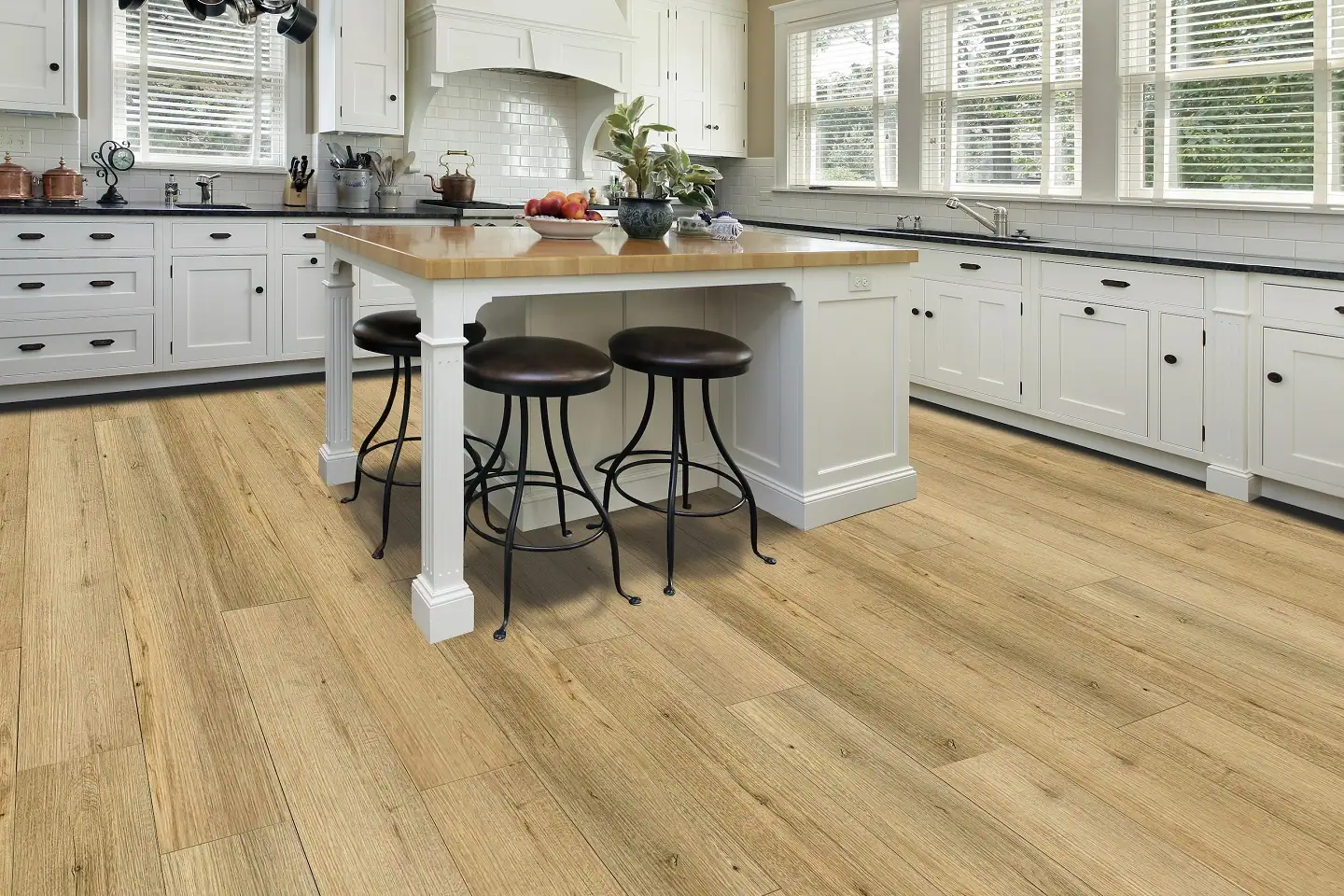
Laminate flooring is an economical option that can mimic the appearance of hardwood or tile. While it’s not entirely waterproof, advancements in laminate technology have led to the development of water-resistant laminate flooring options.
Water-resistant laminate flooring features a moisture-resistant core and a protective top layer that repels water and stains. While it’s not suitable for areas prone to standing water, it can handle spills and splashes common in kitchens and bathrooms. The appeal of laminate flooring lies in its affordability and ease of installation.
5. Engineered Hardwood Flooring
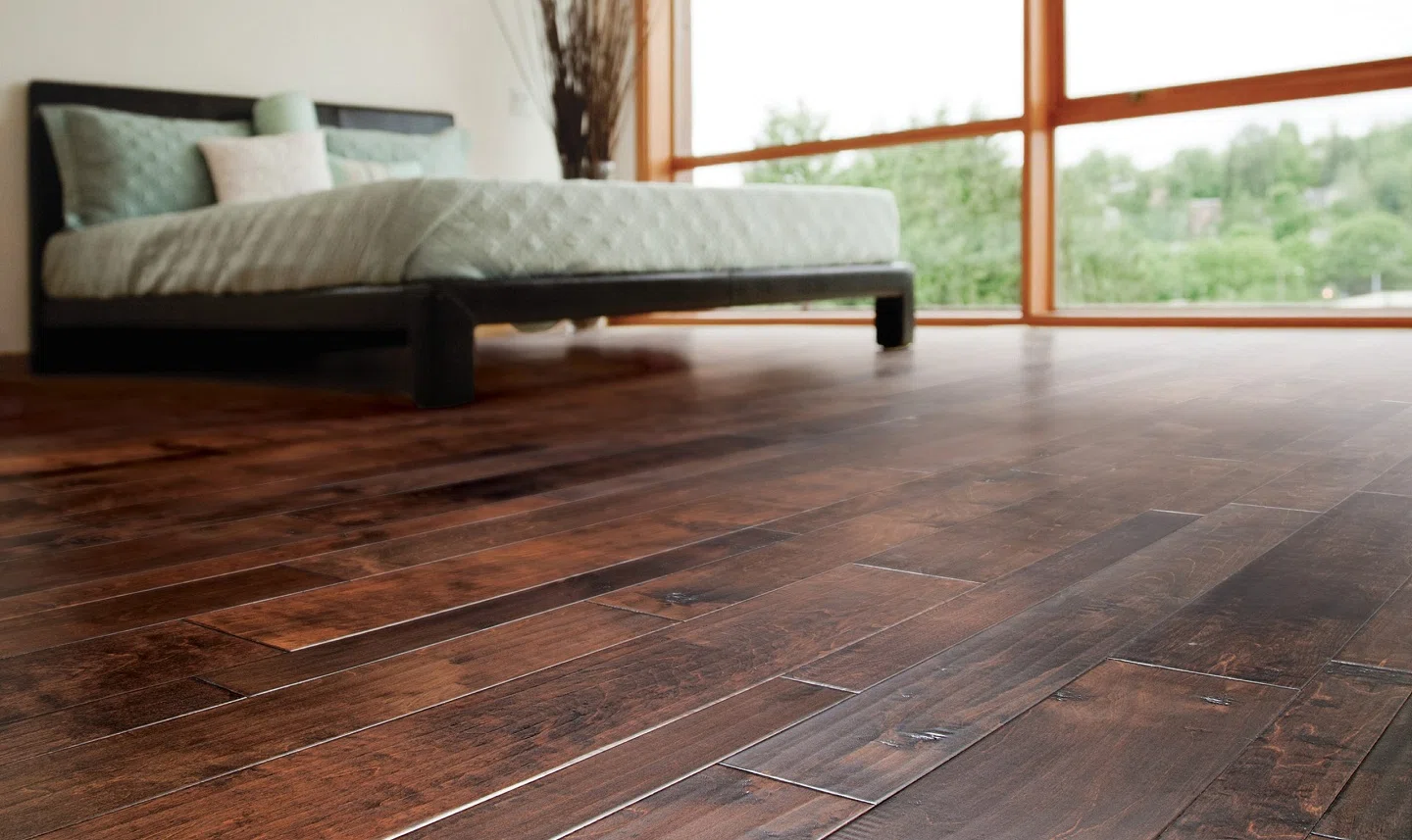
The best engineered hardwood flooring is constructed with layers of wood veneer stacked in a cross-grain configuration. While not entirely waterproof, it offers better resistance to moisture compared to solid hardwood flooring.
The key to using engineered hardwood in wet areas is proper installation and sealing. If sealed correctly, engineered hardwood can withstand occasional spills and humidity without warping or buckling.
What sets engineered hardwood apart is its authentic wood appearance and warmth. It offers the aesthetic appeal of real wood while providing improved moisture resistance.
6. Rubber Flooring
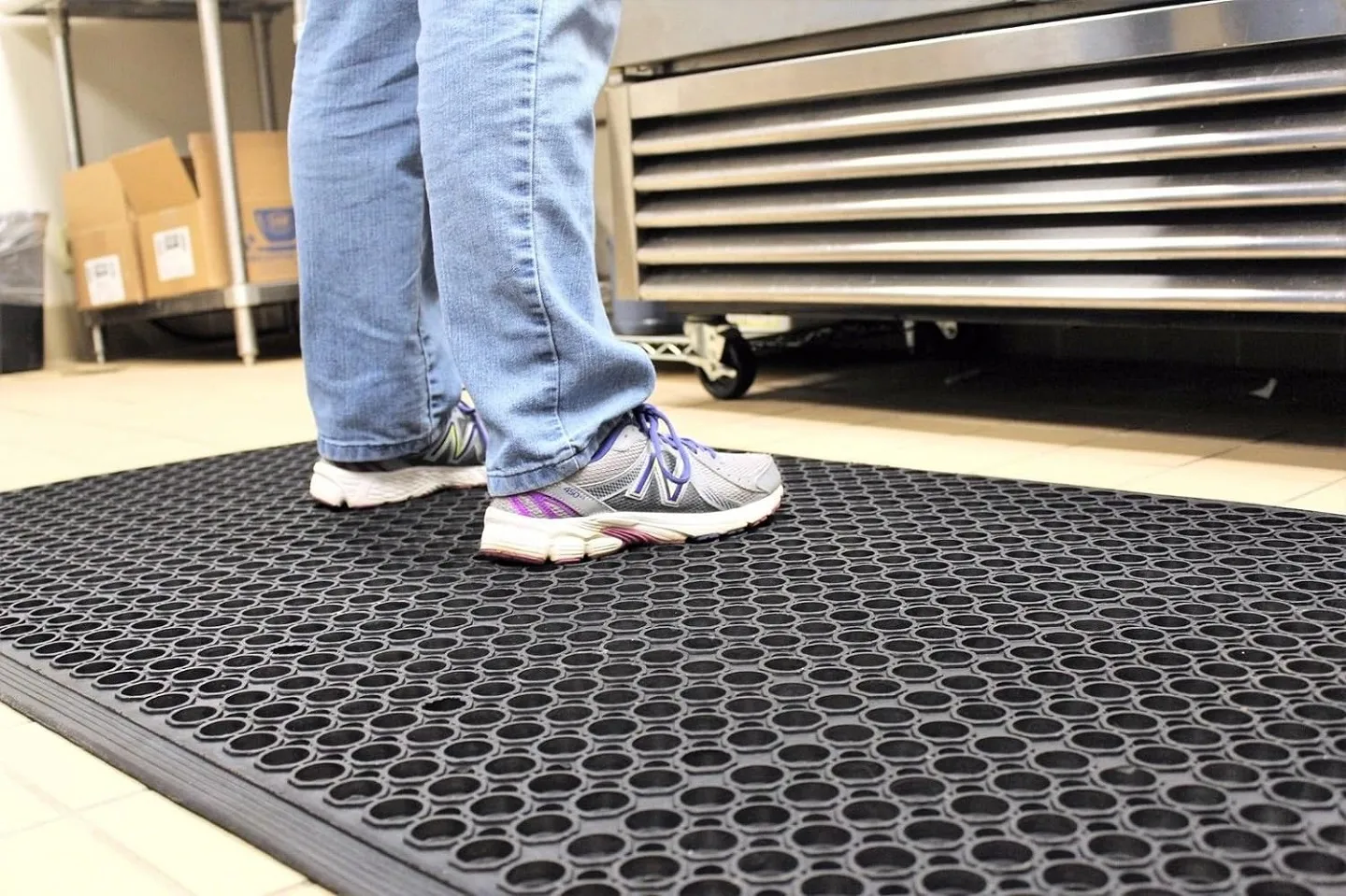
Rubber flooring is a resilient and waterproof option that’s commonly used in commercial settings. However, it can also be an ideal choice for home gyms, playrooms, kitchens, and laundry rooms.
One of the primary advantages of rubber flooring is its slip-resistant properties, making it a safe choice for areas where water may pose a slipping hazard. It’s also incredibly durable and can withstand heavy foot traffic and moisture without deteriorating. Rubber flooring comes in various colors and textures, allowing for creative and practical design options.
7. Cork Flooring
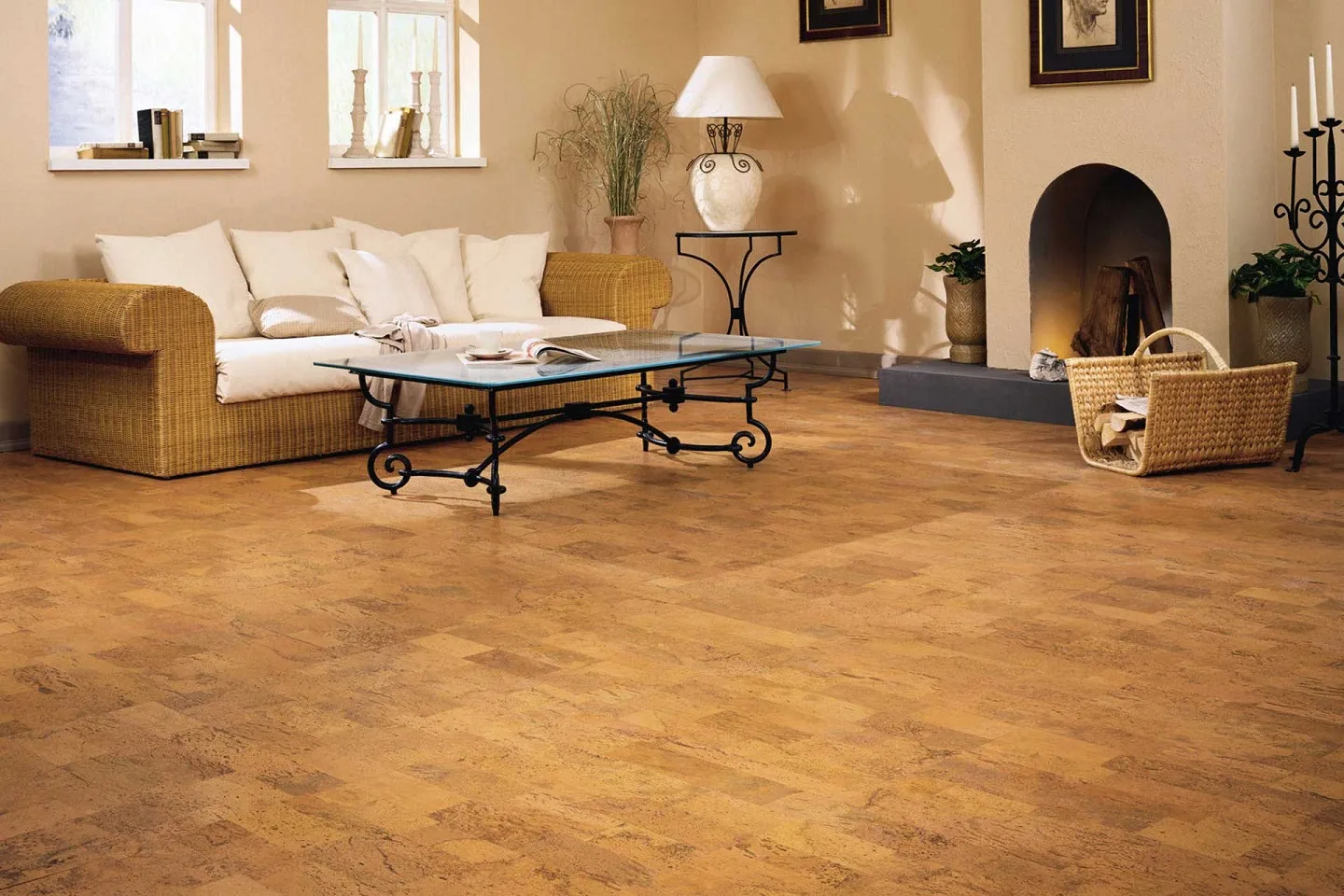
Cork is a natural and sustainable material that possesses inherent resistance to moisture. While not entirely waterproof, cork flooring can be used in areas where occasional spills may occur. Cork’s natural properties make it resistant to mold, mildew, and allergens, contributing to a healthier indoor environment. Additionally, it provides a soft and comfortable underfoot feel, making it a comfortable choice for areas where you stand for extended periods. Cork flooring is available in various styles and finishes, allowing you to integrate it seamlessly into your interior design.
Installation Methods
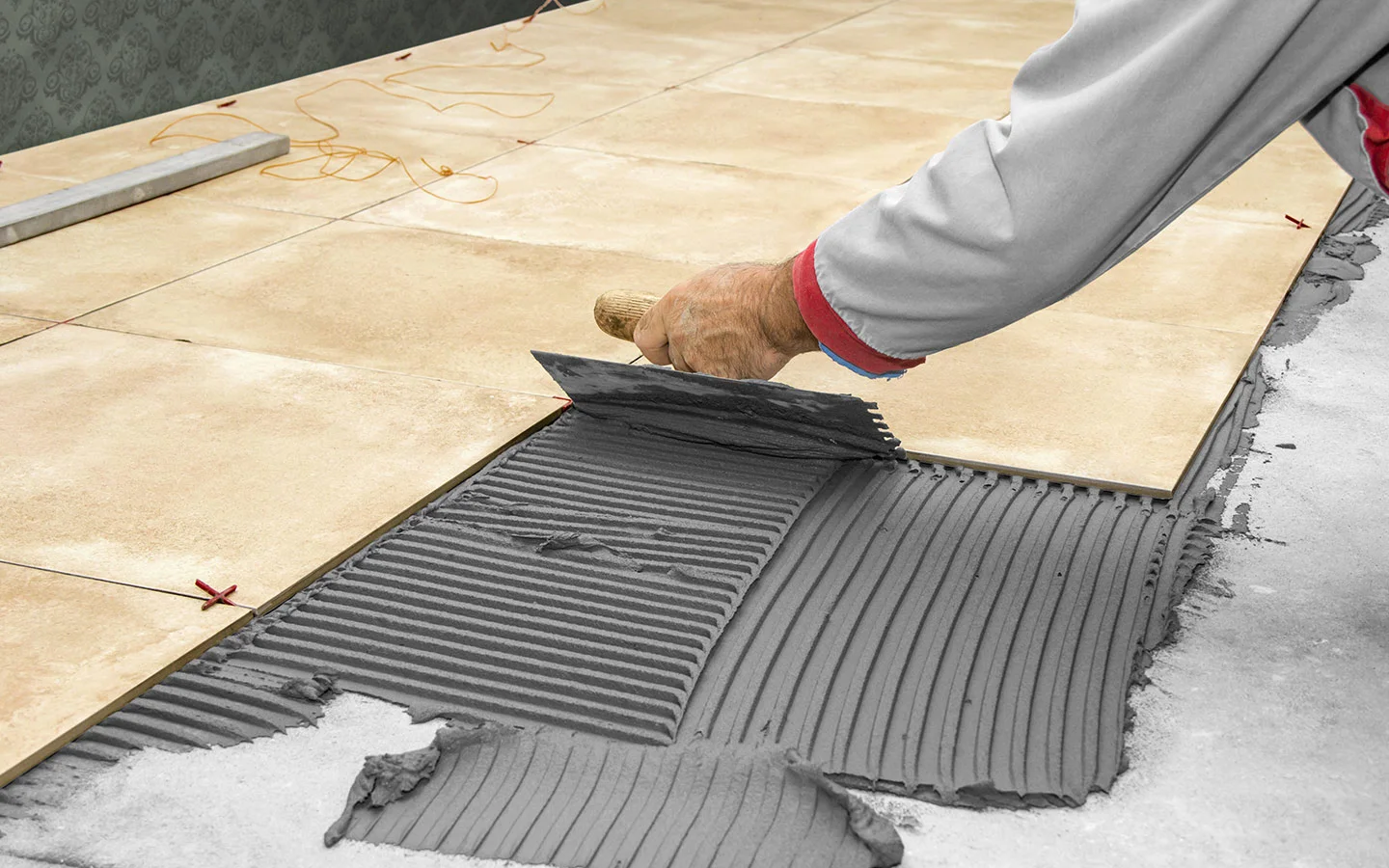
The waterproof floor installation ways varies depending on the type you choose:
Click-and-Lock: Many waterproof flooring options, such as luxury vinyl and laminate, come in click-and-lock systems that are designed for straightforward DIY installation. These systems involve interlocking planks or tiles that fit together securely.
Adhesive: Some types of waterproof flooring, like rubber and cork, may require adhesive for installation. Proper adhesive selection and application are critical to ensure a secure bond.
Grouting: Tile flooring, such as ceramic, porcelain, and stone, often requires grouting between tiles to create a waterproof seal. Grouting is a skilled process that should be done meticulously to prevent water infiltration.
It’s essential to follow the manufacturer’s installation guidelines and, if necessary, enlist the help of a professional installer to ensure a successful installation that maximizes the waterproof properties of the flooring.
Choosing the Right Waterproof Flooring
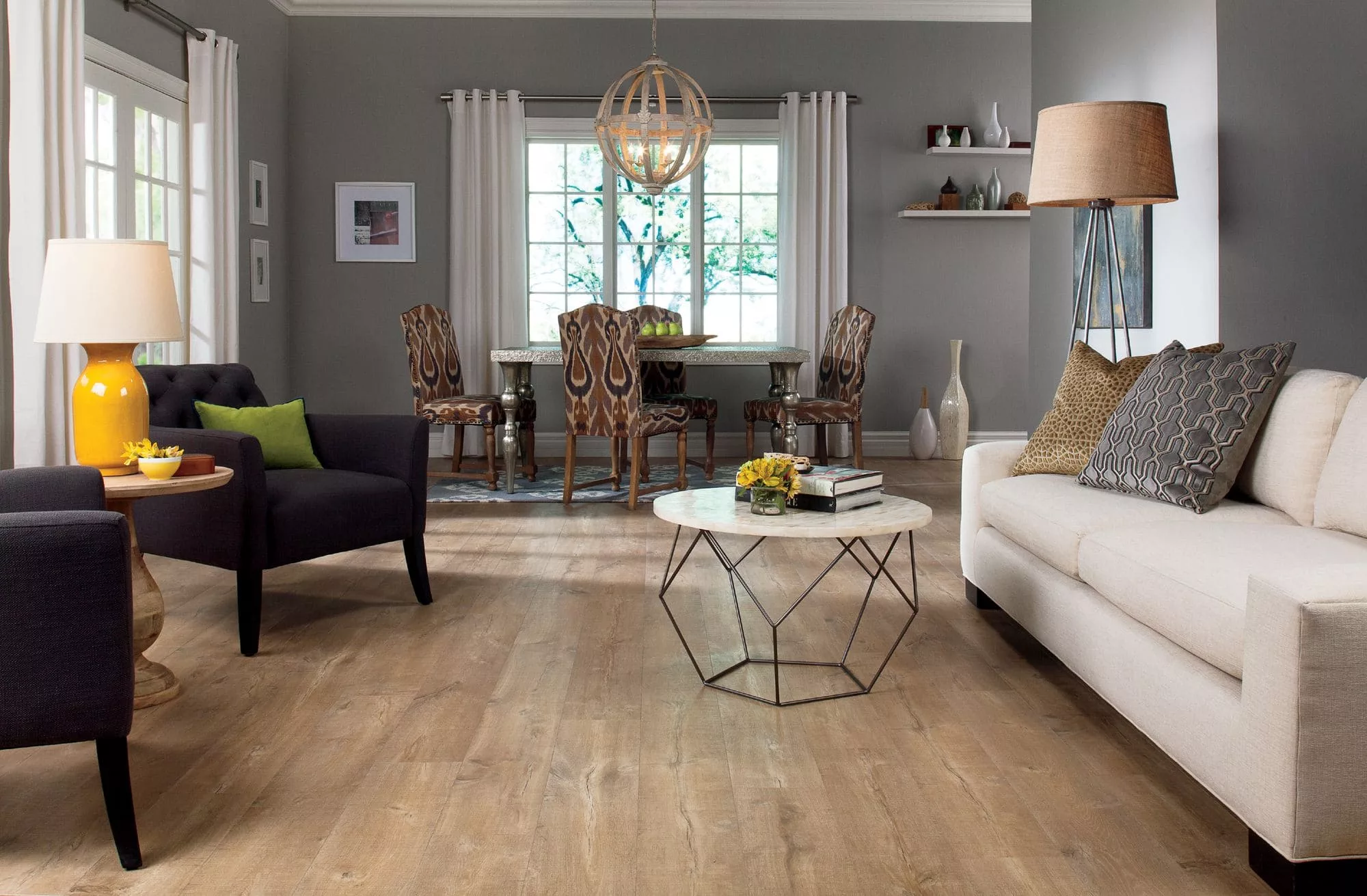
When selecting waterproof flooring for your space, consider the following:
- Start by determining the specific demands of the room. For example, a bathroom may require a different waterproof solution than a living room or kitchen or laundry room. Consider the anticipated level of moisture and foot traffic.
- Choose a style and design that completes your overall interior design and personal preferences. Many waterproof flooring options offer a wide variety of colors, patterns, and textures to fit different aesthetics.
- Assess the expected wear and tear in the area. For high-traffic areas, choose a flooring material known for its durability and resistance to scuffs and scratches.
- Consider how much time and effort you’re willing to invest in maintenance. Some waterproof flooring options require minimal upkeep, while others may need periodic sealing or refinishing.
- Ensure that the chosen flooring option aligns with your budget for the project. Keep in mind that while some options may have a higher upfront cost, they can save you money in the long run due to their durability and reduced maintenance requirements.
- If environmental sustainability is a concern, explore eco-friendly waterproof flooring options. For example, cork is a renewable resource, and some luxury vinyl products are made with recycled materials.
Conclusion
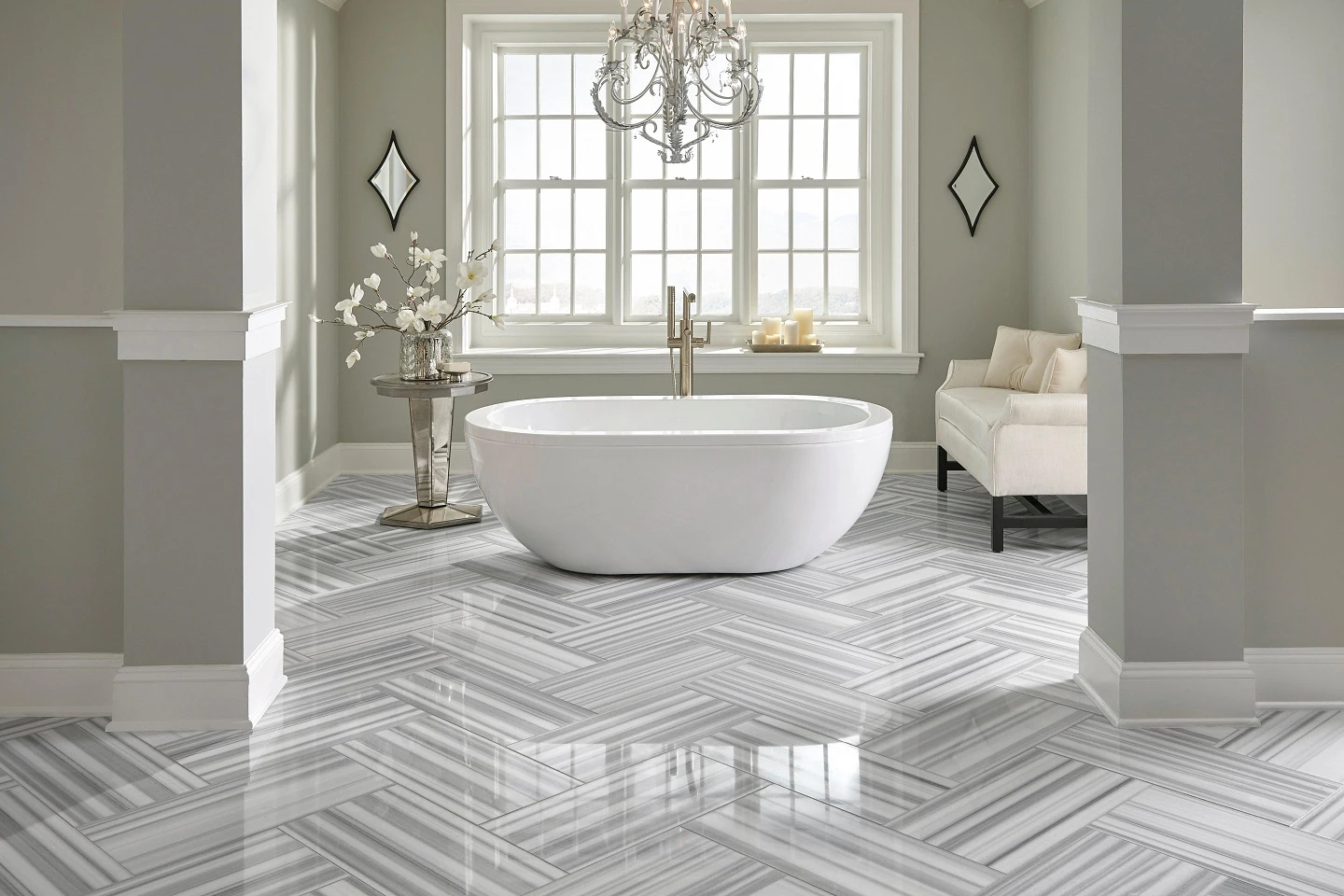
Waterproof flooring is a versatile and practical solution for various areas in your home. By understanding the different types, their advantages and disadvantages, installation methods, and key considerations, you can make an informed decision. This ensures you have a beautiful, functional, and moisture-resistant flooring solution that not only meets but exceeds your needs and preferences. Whether you’re creating a spa-like bathroom, a chef’s dream kitchen, or a cozy basement retreat, waterproof flooring provides the foundation for a space that can stand up to daily life while looking its best for years to come.



Did you find what you were looking for?